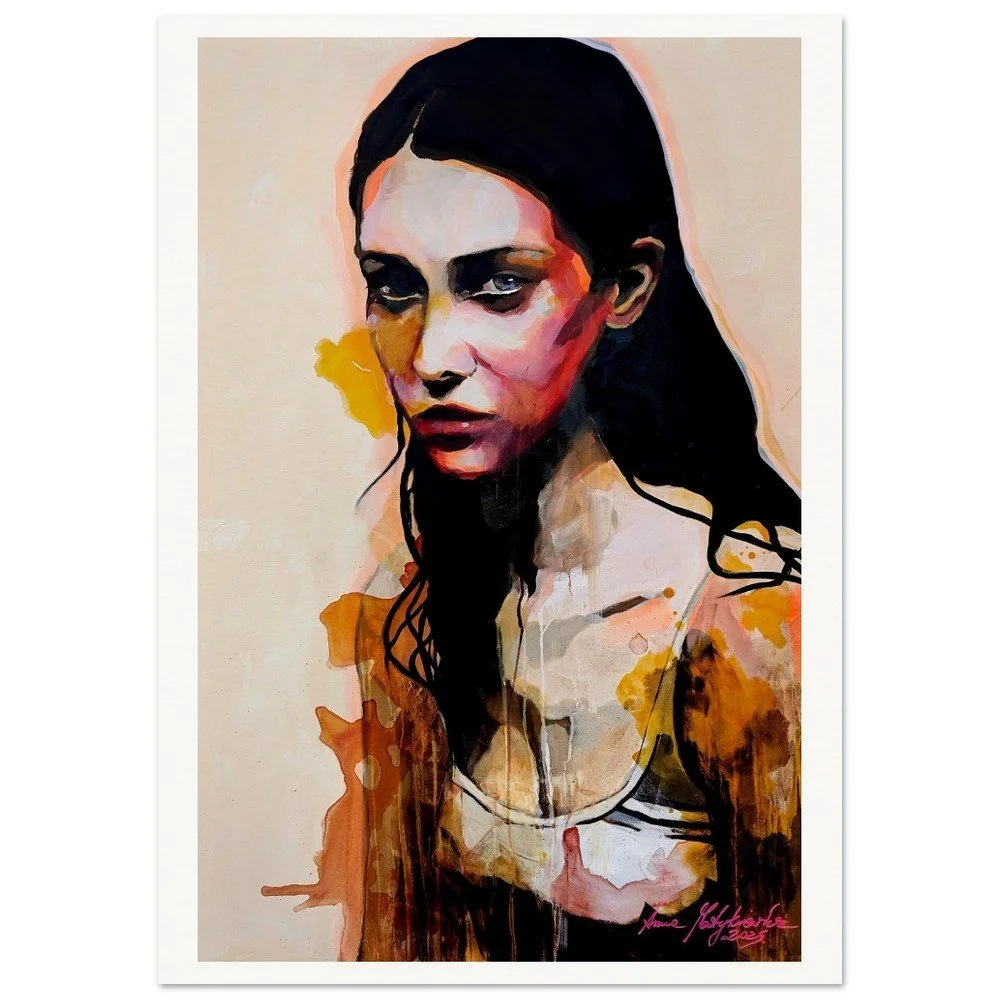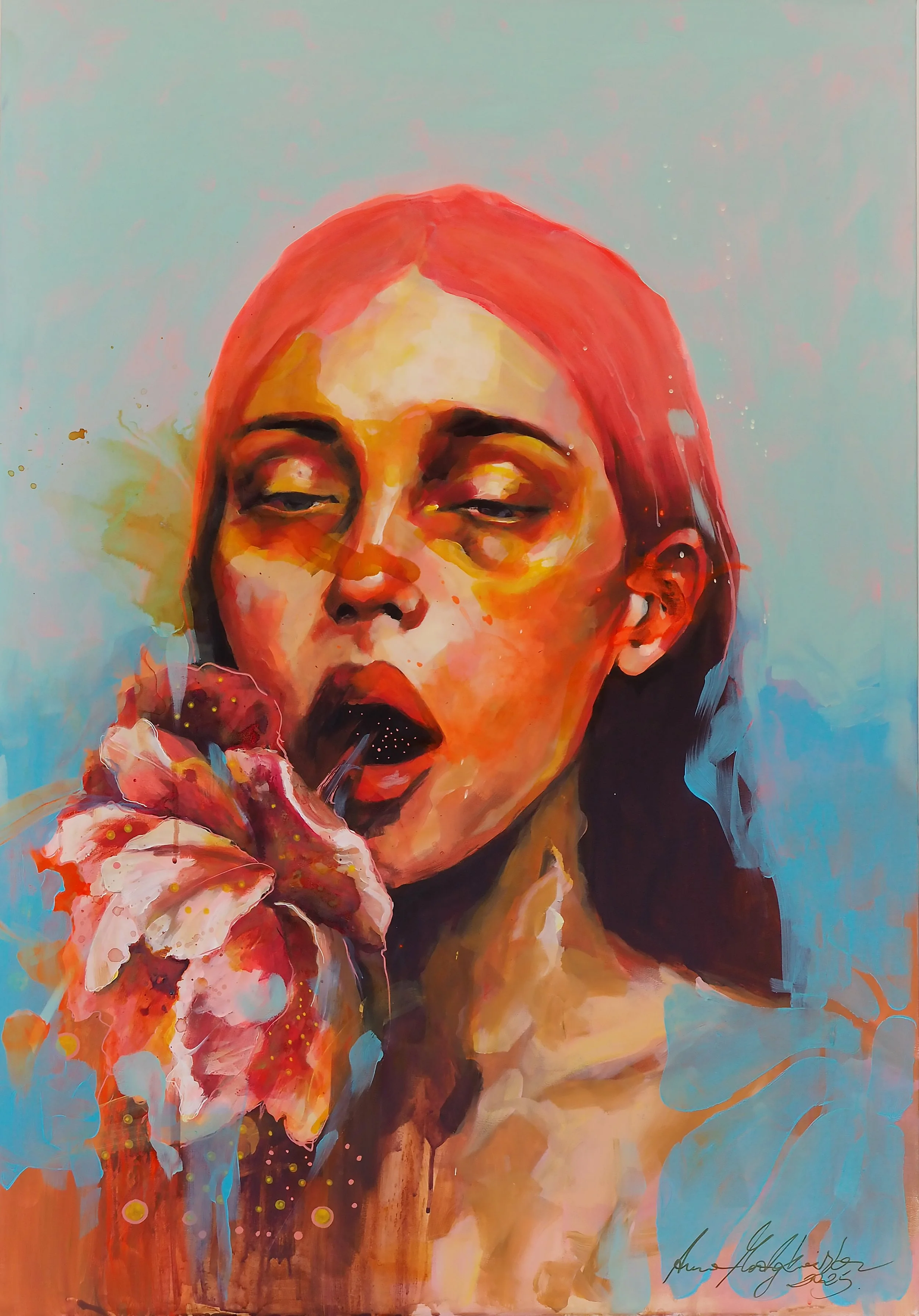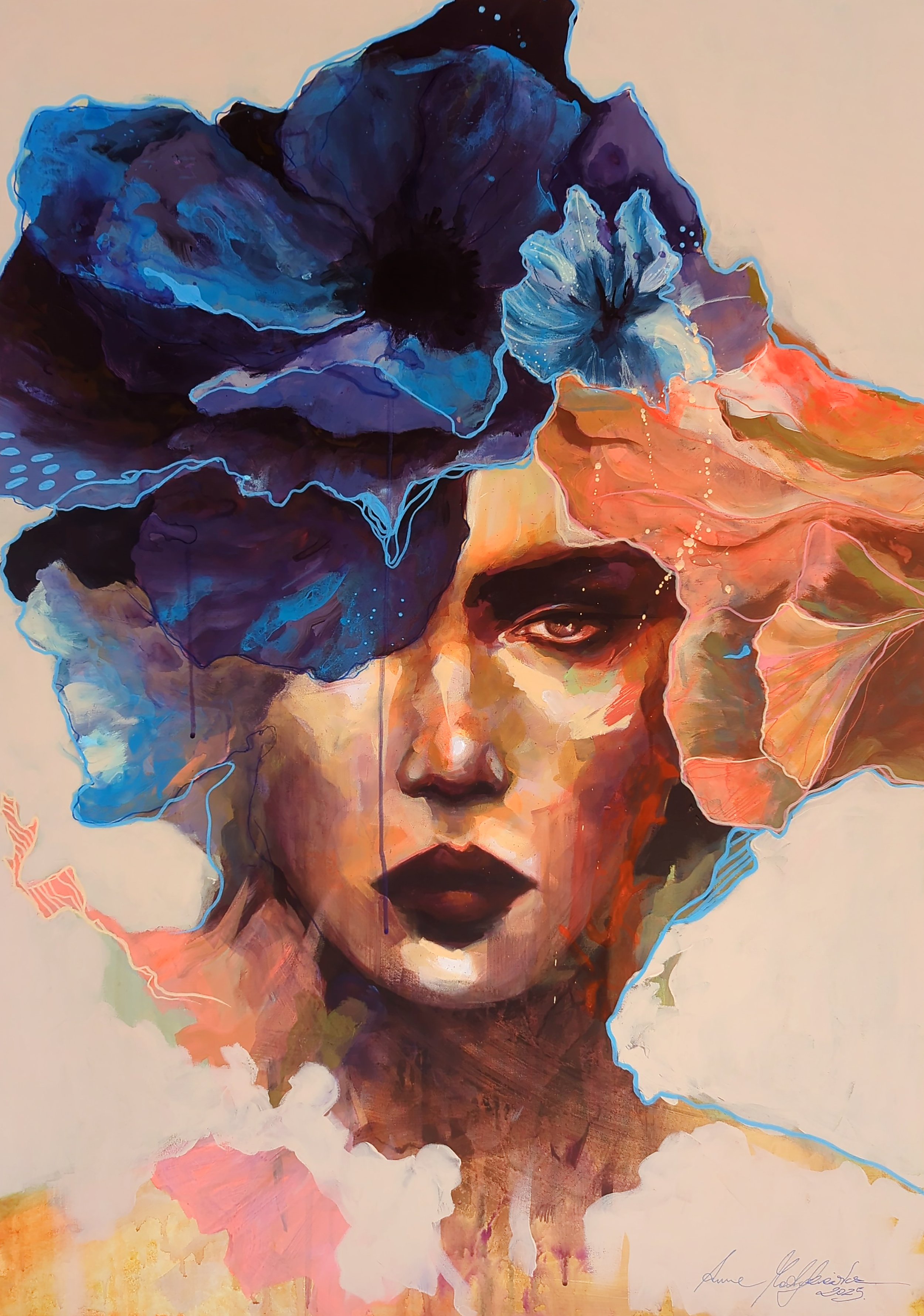About
I create intuitive portraits of women that explore emotion, nature, and the unseen energies around us.
Flowers and natural motifs weave through my work, symbolising growth, love, and connection.
Working instinctively with acrylics and ink, I embrace spontaneity, letting each piece reveal itself organically.
My art captures raw, unfiltered emotion, offering a mirror to our own inner worlds.
ABOUT Creative Process & Inspiration
Finding Inspiration
Anna is drawn to faces with striking features and expressive eyes. She primarily works with water-based paints like ink and acrylics, allowing for fluidity and quick layering. A signature technique of hers is using a hairdryer to speed up drying, creating dynamic textures and unexpected effects.
Color & Emotion
Her colour choices depend on her artistic “periods.” Sometimes she explores a wide range, while other times she favors cool tones. Recently, she has gravitated toward warm hues like oranges and reds, adding intensity and emotion. Strong contrasts between black and white further enhance the drama and depth in her paintings.
Composition: Structure vs. Intuition
Some of Anna’s works follow a structured composition, placing subjects within a narrative context. Other times, she lets intuition guide her, focusing solely on faces and emotions. This spontaneous approach allows her to capture raw, unfiltered expressions, making each piece a powerful statement.
The Essence of Anna’s Art
Anna’s work is more than painting faces—it’s about revealing hidden emotions and telling untold stories. Through her evolving artistic journey, she continues to push the boundaries of expression, leaving a lasting impact with each piece.
CV
EDUCATION
01/10/2009-06/05/2005 The School of Fine Arts (Schola Posnaniensis) Bachelor of Arts (BA) Degree in VISUAL COMMUNICATION ; Poznan, Poland
2024 Munster Technological University ; Level 8 Certificate in Digital Marketing; Cork, Ireland
WORK EXPERIENCE
Professional Artist, Professional Artist, Self employed, Full-time, Mar 2012 – Present, Co Wicklow, Ireland
Sales Support Coordinator for VMWARE, ServiceSource (acquired by Concentrix) Full-time, Jan 2010 – Mar 2012, Dublin, Ireland
Recruitment Officer, QED Recruitment Agency, Oct 2008 – Apr 2009, Dublin, Ireland
Receptionist, Trinity Chiropractic & Natural Health Centre Dame Street, Mar 2008 – Jul 2008, Dublin, Ireland
Nikon Technical Support, Stream Global Services , Oct 2006 – Oct 2007 , Dublin, Ireland
Shop Assistant, Pixels Digital Camera shop, 2006, Dublin, Ireland
SUBSCRIBE TO OUR



